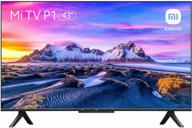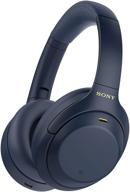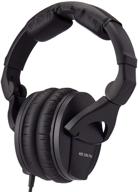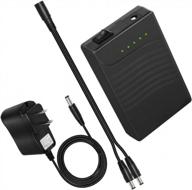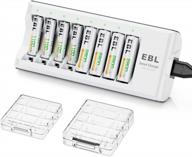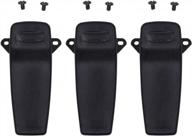Choosing the Right Battery Charger
With so many different battery chargers on the market, it can be tricky to find the right one for your needs. Here are some key factors to consider when shopping for a new battery charger:
Types of Batteries
First, determine what type of batteries you need to charge. The most common types are:
- AA and AAA - used in remote controls, flashlights, toys
- C and D - larger batteries used in certain toys and gadgets
- 9V - square batteries used in smoke detectors and older electronics
- Button cells - small, flat batteries used in watches, hearing aids, and other small devices
- Rechargeable batteries - can be reused multiple times, popular types are Ni-Cd, Ni-MH, Li-ion, and lead-acid
Make sure any charger you choose is compatible with the battery type you need to charge.
Another interesting products
Charger Capacity
Next, consider how many batteries you need to charge at once. Battery chargers often indicate how many batteries they can charge simultaneously. For example, a 4-battery charger can charge 4 AA batteries at the same time. Choose a charger with enough capacity to suit your needs.
Charging Speed
Also look at charging speed, which is measured in mA (milliamperes). A faster charger around 1000-1500mA can charge batteries in 1-2 hours, while a slower charger around 200-500mA may need 6-12 hours.
Advanced Charging Modes
Some advanced chargers offer modes for optimum charging and battery health:
- Trickle charging - charges battery at low rate to maintain full charge
- Top-off charging - tops off battery charge periodically
- Pulse charging - allows short pauses in charging to reduce heat
- Cycle charging - discharges and recharges battery for maximum lifespan
Safety Features
For safety, look for automatic shut-off to prevent overcharging, short circuit and overheating protection, and reverse polarity protection. An LED indicator for charge level is also useful.
Similar products
Price
Finally, consider the price. Basic single battery chargers start around $5-10, while larger multi-battery intelligent chargers with more features can cost $30-50+. Determine how much you need to invest for the features that are most useful for your needs.
Doing your research will help you select the ideal battery charger. Focus on battery compatibility, charging capacity and speed, advanced charging modes if needed, and important safety protections.
Types of Battery Chargers
There are several main types of battery chargers, each with their own pros and cons. Here is an overview of the most common battery charger varieties:
Top products in 🔌. Battery Chargers
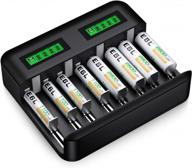

39 Review

Wall Chargers
Wall chargers, also known as AC chargers, plug into a standard electrical outlet. They convert the AC power into DC current to charge your device's battery. Key features:
- Convenient for home and office use
- Can charge quickly with higher wattage
- Must be near an outlet to use
Car Chargers
Car chargers plug into the DC outlet/cigarette lighter of a vehicle. They provide power from the car battery to charge devices on the go. Pros and cons:
- Allows charging during commutes and road trips
- Lower power than wall chargers - charge time is longer
- Only works when driving or engine is idling
Solar Chargers
Solar chargers use solar panels to harness power from the sun and convert it to electricity. Features include:
- Useful for charging during power outages
- Eco-friendly/sustainable charging method
- Dependent on sunny weather
- Typically slower charging speed
Smart Chargers
Smart chargers have microchips to monitor battery health and optimize the charging process. Benefits include:
- Prevent overcharging
- Can prolong battery lifespan
- More expensive than basic chargers
Wireless Chargers
Wireless chargers use electromagnetic induction to charge devices placed on the charger. Pros and cons:
- More convenient - no plugging in required
- Device must be compatible with wireless charging
- Typically slower than wired charging
When choosing a battery charger, consider where you will use it most and which features are most important for your needs and budget.
Top Features to Look for When Buying a Battery Charger
With battery technology continually evolving, today’s battery chargers come with more advanced features. Here are some top features to look for when shopping for a new battery charger:
Compatibility
First, ensure the charger is compatible with the batteries you need to charge. Key compatibility factors:
- Battery chemistry - NiMH, NiCd, Li-ion, Lead-Acid, etc.
- Battery size - AA, AAA, C, D, 9V, etc.
- Rechargeable vs non-rechargeable batteries
A mismatch can prevent charging or even damage batteries.
Charging Speed
Faster charging speeds allow you to quickly repower your devices. Look for outputs measured in milliamperes (mA):
- Slow chargers: 200-500 mA
- Fast chargers: 1000-1500 mA
Higher mA ratings equal faster charging.
Number of Bays
Look at the number of battery bays or slots. Having multiple bays allows you to charge several batteries at once.
LCD Display
An LCD screen can display charge progress and battery health info like voltage and temperature. Helpful for monitoring charging.
Safety Features
Key safety protections to have:
- Overcharge prevention
- Overheat protection
- Short circuit prevention
- Reverse polarity protection
Advanced Modes
Some chargers offer modes for optimal battery health:
- Trickle charging - maintains battery charge
- Pulse charging - allows pauses to reduce heat
- Cycle charging - cycles discharge/recharge
Consider if you need these specialized modes based on the batteries you use.
Warranty
Finally, look for a decent 1+ year warranty as a sign of a quality product.
Prioritize the features that best suit your charging needs and battery types. The right charger helps keep your batteries performing their best.
How to Use and Maintain Your Battery Charger
Using and caring for your battery charger properly will help keep it functioning optimally for years. Follow these tips for getting the most out of your charger:
Read the Instructions
Be sure to read the user manual to understand the charger’s specific features, charging times, safety precautions, and maintenance needs. Follow the manufacturer’s instructions.
Prep the Batteries
Before charging, inspect batteries for damage or leaks. Clean dirty battery contacts with a cotton swab and isopropyl alcohol to ensure a good connection.
Charge in a Safe Location
Place the charger and batteries in a safe, dry location away from flammable materials. Do not cover the charger while operating.
Connect Properly
Insert batteries properly by matching the polarity (+/-) markings. Forcibly inserting backwards can damage the charger. Double check connections before charging.
Monitor the Charge
During charging, monitor batteries for excess heat which can indicate a problem. Use the charger’s indicator lights to track progress. Remove batteries promptly when fully charged.
Allow Proper Cool Down
Let batteries cool to room temperature before recharging. Do not exceed the recommended charge cycles.
Clean the Charger and Contacts
Use a dry cloth to regularly wipe down the charger and battery contacts to prevent dirt buildup. Unplug before cleaning.
Store Properly
Disconnect batteries when not charging. Store batteries and charger in a cool, dry place. Do not leave batteries constantly connected to the charger.
Check for Damage
Inspect the charger periodically for any cracks or damage to the casing, frayed cords, or loose connections which can impact safety and performance.
Following the manufacturer’s usage guidelines and giving your charger proper basic maintenance will help ensure safe, effective charging over the long term.
Troubleshooting Common Battery Charger Issues
Battery chargers can run into problems occasionally that prevent them from charging properly. Here are some common battery charger issues and troubleshooting tips:
Charger Won't Turn On
If the charger is plugged in but won't power on, try these steps:
- Check electrical connections - Replace loose, damaged, or faulty cords/cables
- Test the outlet - Make sure the outlet has power by plugging in another device
- Check for tripped fuse - Replace any blown fuses in the charger
- Reset the charger - Unplug and reconnect the charger
Charger Isn't Charging
If the charger powers on but isn't charging the batteries, potential solutions include:
- Check battery alignment - Make sure batteries are inserted correctly
- Try different batteries - Faulty or worn out batteries may not charge
- Check for loose connections - Clean battery terminals and connections
- Test battery voltage - Dead batteries won't recover with standard charging
Charging Takes Too Long
If charging seems excessively slow, check these factors:
- Charger compatibility - Incompatible or lower amperage charger
- Old batteries - Batteries can charge slower as they age
- Dirty contacts - Clean battery terminals and charger with alcohol
- Faulty power source - Use different outlet or USB port
Charger Gets Hot
If the charger overheats during use:
- Don't cover charger - Allow air circulation
- Check vents - Clean out any dust or debris
- Use proper amperage - Only use charger's original power source
- Replace charger - Excessive heat can indicate a defective unit
Preventative steps like avoiding damage, cleaning contacts, and monitoring battery health can help minimize common battery charger problems.
Comparing Battery Charger Brands and Models
With a wide selection of battery charger brands and models available, it helps to compare key features and capabilities when choosing a charger for your needs.
Key Brands
Some top battery charger brands include:
- Anker - Known for portable power banks and fast charging technology
- Duracell - Trusted name in batteries also makes multi-port chargers
- Energizer - Battery leader offering rechargeable battery and charger kits
- Panasonic - Electronics company manufacturing chargers alongside batteries
- RAYOVAC - Budget-friendly chargers from major battery brand
Charger Types
Key charger types and models include:
| Charger Type | Example Models |
|---|---|
| Single battery | Panasonic BQ-CC17, Rayovac PS200 |
| Multiple bay | Energizer CHFC4W, Duracell CEF90 |
| Smart chargers | Anker PowerCore Fusion, Duracell SmartCharger |
| Solar chargers | Anker PowerPort Solar, Rayovac SE3W-R |
| Power banks | Anker PowerCore 20100, Duracell Powerbank 100 |
Key Features
When comparing models, look at:
- Battery compatibility
- Number of bays or ports
- Charging speed (voltage and amperage)
- LCD screens and indicators
- Safety protections
- Size and portability
- Extra modes and capabilities
- Price and warranty
Choosing a charger matched to your specific battery needs and charging preferences will provide the best performance and value.
Battery Charger Safety Tips
Battery chargers can pose risks like electric shock or fire if not used properly. Follow these safety tips when using your battery charger:
Use the Right Charger
Only use the charger designed for your specific battery type. Attempting to charge a battery with an incompatible charger could cause the battery to leak, overheat, or explode.
Avoid Cheap Low-Quality Chargers
Beware of cheap counterfeit or knockoff chargers which often lack adequate safety features. Purchase chargers from reputable brands.
Inspect the Charger
Check for any damage to the charger casing, frayed wires, loose connections etc. Do not use chargers that are cracked, broken, or malfunctioning in any way.
Charge in a Safe Place
Always place chargers and batteries in a well-ventilated area on a nonflammable surface like a tabletop. Never charge batteries on carpet, wood, or flammable surfaces.
Don't Overcharge Batteries
Once batteries are fully charged, unplug them immediately. Overcharging can lead to battery leakage or rupture. Follow recommended charge times.
Watch for Overheating
If batteries or the charger feel hot during charging, discontinue use. Overheating can indicate a malfunctioning battery or faulty charger.
Avoid Moisture
Keep chargers away from water, humidity, and wet conditions which can cause electric shocks. Never handle chargers with wet hands.
Supervise Charging
Do not leave charging batteries unattended for extended periods. Periodically check for potential issues.
Store Properly
Disconnect batteries when fully charged. Keep batteries and chargers in a cool, dry place out of reach of children.
Following basic safety precautions helps prevent accidents and injuries when charging batteries.
How to Get an Amazon Prime Subscription for Profit When Selling Battery Chargers
As an Amazon seller of battery chargers, having an Amazon Prime subscription can increase profits in several ways. Here are some tips for maximizing the benefits of Prime when selling chargers on Amazon:
Faster Shipping Times
With Prime, you get free two-day shipping on all Amazon orders. This faster shipping helps attract more Prime customers to buy your chargers. Non-Prime members may be discouraged by slower standard shipping times.
Prime Badging
Get "Prime-eligible" badging on your battery charger listings by using FBA (Fulfilled by Amazon). Prime members heavily favor items with Prime shipping, so this can boost conversion rates.
Lower Fees
Using FBA gets you better rates on pick & pack and weight handling fees. You save an average of 4-8% in fulfillment fees vs. Merchant Fulfilled orders. Those savings go straight to your bottom line.
FBA Inventory Storage
With Prime, you get discounts on monthly FBA inventory storage fees. Lower storage costs help improve profit margins on charger sales.
Exclusive Deals & Promotions
Prime members get special discounts and deals. As a seller, you can run Prime-exclusive Lightning Deals, Deals of the Day, and promotions to boost sales.
Prime Customer Demographics
Research shows Prime users tend to be higher-spending shoppers. Focusing sales efforts on Prime members can capture more of these valuable buyers for your battery chargers.
The benefits of an Amazon Prime subscription tailored for sellers make it a worthwhile investment for profitability. Optimize Prime to attract customers, minimize fees, and boost charger sales.
What Are The Most Common Problems Faced By Users Of Battery Chargers??
Based on the search results, here are some of the most common problems faced by users of battery chargers:
- Long taper time caused by input current limit too low, input resistance from source to charge too high, output resistance from charger to battery too high, too weak of input adapter, poor PCB layout causing thermal regulation or board/case hot spots2.
- Severe heat, shell burning, and deformation caused by loosening of some components due to carrying them with the car, or battery clips shorted, battery clips connected to battery terminals (+) and (-) reversed, battery to be charged is already damaged, shorted, or not in good condition.
- Dead battery or one that has been discharged for a long period of time may not respond to charging.
- Battery charging very slowly due to a number of factors.
- Outlets causing problems to the jump starter.
- Internal fan malfunction, which keeps the electrical components from overheating.
- Battery charger light malfunction.
It is important to refer to the operating manual provided with the specific charger as a guide and contact the supplier of the power chair or power scooter for further advice if battery charger troubleshooting efforts fail to get the charger working properly.
Most Popular Problems With Battery Chargers
Based on the search results, here are some of the most common problems faced by users of battery chargers:
- The battery won’t charge at all, which could be due to a dead battery, a discharged battery, or a faulty power source.
- The battery charges very slowly, which could be due to a low input current, high input resistance, high output resistance, weak input adapter, or poor PCB layout.
- Battery clips shorted, battery clips connected to battery terminals (+) and (-) reversed, battery to be charged is already damaged, shorted, or not in good condition, or a busted fuse.
- Severe heat, shell burning, and deformation caused by carrying the charger with the car, or a damaged battery.
- Battery drain while plugged into the charger, which could be due to an old school transformer battery charger, overcharging, or a defective charger.
- Outlets causing problems to the jump starter5.
- Internal fan malfunction, battery charger light malfunction, or poor electrical contacts.
It is important to refer to the operating manual provided with the specific charger as a guide and contact the supplier of the power chair or power scooter for further advice if battery charger troubleshooting efforts fail to get the charger working properly.






